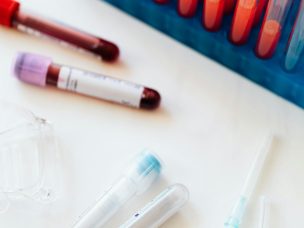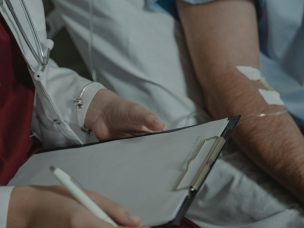In this MD Newsline exclusive interview with vitreoretinal specialist Dr. Alan Franklin, we discuss barriers to treatment adherence and COVID-19 as they relate to wet AMD.
MD Newsline:
What do you think are the major barriers to wet AMD treatment adherence?
Dr. Alan Franklin:
“In the best-case scenario, it is difficult for our patients to come in to see us for the recommended frequency of injections. As doctors, we can sit on our high-horse about it, but these are elderly patients who are often reliant on rides from family members to get to their appointments.
When you look at our current technology for wet AMD of 6 to 8 shots in the eye per year, a little more than 1 in 3 patients get better. So, I’ll see people present and say, ‘well, the treatment’s working pretty well,’ and I’ll say, ‘well, talk to the 2 out of 3 of my patients that are getting injections every 6 to 8 weeks and their vision hasn’t gotten terrible, but it’s still not good.’
In that scenario, a lot of people can’t come in every 6 to 8 weeks. Then, something else comes up, and now they’re 3 to 4 months out from an injection. Their vision gets worse, and it’s hard to get it back. So, getting to the doctor’s office with the prescribed frequency, based on the instability of our current medications that we use to treat wet AMD, is the biggest barrier.”
MD Newsline:
What are the biggest challenges that retina specialists are tasked with in the wake of COVID-19?
Dr. Alan Franklin:
“Getting people to come to appointments has been even more difficult with COVID-19. At the start of the pandemic, a lot of people were scared to leave the house. We’re dealing with an elderly population, so their risks of hospitalization and death are definitely elevated with COVID-19.
We have a lot of patients that we didn’t see for months because of COVID-19, and I can’t say that I wouldn’t make a similar decision for my family. When you’re facing 2 to 4% fatality rates from a virus pre-vaccine, that’s very daunting. So a lot of patients stayed at home.”
Responses have been condensed and lightly edited.









